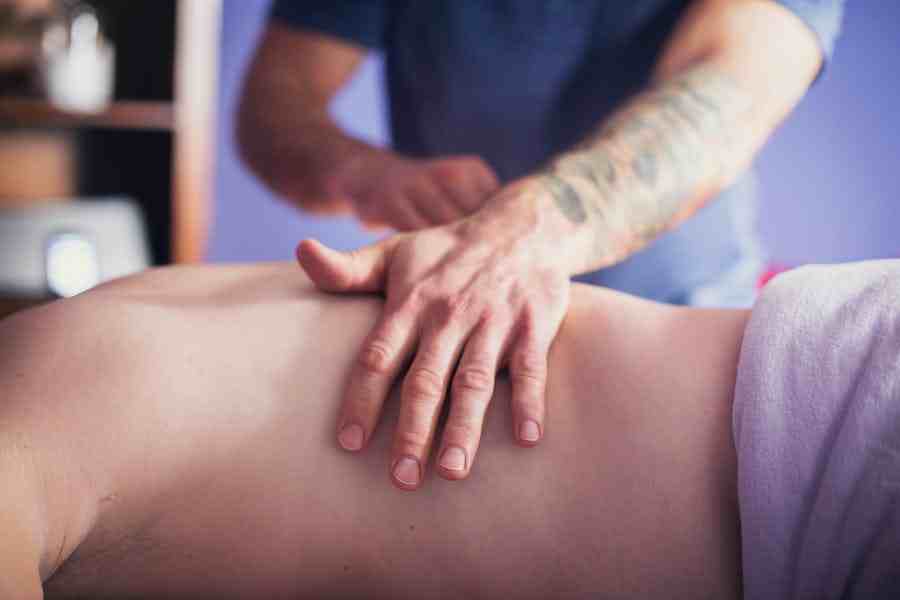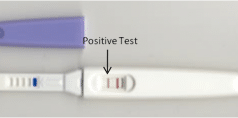
Massages are more than just a luxury; they’re a therapeutic experience that leaves us feeling rejuvenated and relaxed. But have you ever wondered why massages feel so good? The answer lies in the intricate interplay between our body, mind, and the skilled touch of a massage therapist. In this article, we will delve into the science and benefits behind the pleasurable sensations of a massage, uncovering the secrets of how this ancient healing practice can soothe our bodies and elevate our spirits.
Why Do Massages Feel Good?
Massages feel good for several reasons, encompassing both physiological and psychological factors:
- Endorphin Release: Massages stimulate the release of endorphins, which are the body’s natural painkillers and mood elevators. These feel-good hormones induce a sense of relaxation and well-being.
- Reduced Stress and Anxiety: Massages can lower cortisol levels (the stress hormone) while increasing serotonin and dopamine production, promoting relaxation and reducing anxiety.
- Muscle Tension Relief: Skilled massage techniques target tight muscles and knots, promoting muscle relaxation and alleviating discomfort.
- Improved Blood Flow: Massages enhance blood circulation, delivering oxygen and nutrients to tissues while removing waste products. This promotes overall body relaxation and reduces muscle soreness.
- Enhanced Flexibility: Massages can improve joint flexibility and range of motion by manipulating soft tissues, leading to a sense of physical comfort and well-being.
- Better Sleep: Many people experience improved sleep quality after a massage session, as the relaxation induced by massages can help with insomnia and sleep disorders.
- Mind-Body Connection: Massages foster a strong mind-body connection by promoting mindfulness and relaxation, leading to a sense of emotional and physical balance.
- Pampering and Self-Care: The act of taking time for oneself and indulging in self-care contributes to the positive feeling associated with massages.
How The Skin And Nervous System Work Together To Perceive Touch?
The perception of touch is a complex process involving the collaboration of the skin and the nervous system. Here’s how they work together to perceive touch:
- Skin Receptors: The skin is equipped with specialized sensory receptors known as mechanoreceptors. These receptors come in various types, including:
- Meissner’s Corpuscles: These are close to the skin’s surface and are sensitive to light touch and changes in texture.
- Pacinian Corpuscles: These are deeper in the skin and respond to deep pressure and vibration.
- Merkel Cells: These are found in the epidermis and are responsible for detecting sustained pressure and shapes.
- Ruffini Endings: These are found in the deep layers of the skin and detect stretching and deformation.
- Stimulus Detection: When an external stimulus, such as pressure, temperature, or vibration, is applied to the skin, these mechanoreceptors respond by generating electrical signals.
- Nervous System Transmission: The electrical signals generated by the mechanoreceptors travel through specialized nerve fibers, such as A-beta fibers, which are responsible for transmitting touch sensations. These fibers form part of the peripheral nervous system.
- Spinal Cord Processing: The electrical signals are then relayed to the spinal cord. In the spinal cord, these signals may undergo initial processing, such as amplification or inhibition, before being transmitted further to the brain.
- Brain Interpretation: The signals eventually reach the brain, specifically the somatosensory cortex. The somatosensory cortex processes and interprets sensory information, allowing us to perceive and identify various aspects of touch, such as pressure, texture, temperature, and location.
- Perception and Response: Once the brain interprets the sensory input, it generates conscious awareness of the touch sensation. Depending on the nature of the stimulus and the brain’s interpretation, it can trigger various responses, such as feeling pleasure, pain, warmth, or pressure. This perception is critical for our ability to interact with the environment and respond to stimuli appropriately.
Understanding Massage Techniques
Massage therapy encompasses various techniques, each designed to address specific needs and provide various benefits. Here, we’ll explore some popular massage techniques and their unique characteristics:
Swedish Massage:
Swedish massage is one of the most common and well-known techniques.
It involves long, gliding strokes, kneading, tapping, and gentle stretches.
Designed for relaxation and stress relief, Swedish massage improves blood circulation and promotes a sense of overall well-being.
It’s an excellent choice for those new to massage or seeking general relaxation.
Deep Tissue Massage:
Deep tissue massage targets deeper layers of muscles and connective tissues.
Therapists use firm pressure and slow strokes to release chronic muscle tension, knots, and adhesions.
This technique is ideal for individuals with chronic pain, muscle injuries, or specific areas of tension.
Shiatsu Massage:
Shiatsu is a Japanese massage technique that focuses on pressure points along the body’s meridians, similar to acupuncture.
Practitioners use their fingers, palms, elbows, and knees to apply rhythmic pressure.
Shiatsu aims to balance the body’s energy flow, relieve tension, and promote relaxation.
It can be particularly beneficial for addressing physical and emotional imbalances.
Hot Stone Massage:
Hot stone massage incorporates heated stones placed on specific points of the body and used by the therapist to massage the client.
The heat from the stones helps to relax muscles, allowing the therapist to work more deeply.
Sports Massage:
Sports massage is tailored to athletes and active individuals.
It aims to enhance performance, prevent injuries, and aid in post-exercise recovery.
Techniques may include deep tissue massage, stretching, and trigger point therapy.
Sports massage helps reduce muscle soreness, improve flexibility, and enhance athletic performance.
Potential Side Effects Or Risks Associated With Massages
While massages are generally safe and provide numerous benefits, there are some potential side effects and risks to be aware of, particularly if certain precautions are not taken or if the massage therapist needs to be properly trained. Here are some potential side effects and risks associated with massages:
- Soreness and Discomfort: After deep tissue or intense massages, it’s common to experience some muscle soreness or discomfort. This usually subsides within a day or two but can be more pronounced if the pressure applied during the massage is excessive.
- Bruising: In rare cases, deep tissue or vigorous massages can cause minor bruising, especially in individuals with sensitive skin or fragile blood vessels.
- Allergic Reactions: Some individuals may be sensitive or allergic to massage oils or lotions during the session. Always inform your therapist of any allergies or sensitivities before the massage.
- Infection Risk: Infections can occur if the massage therapist’s hands, equipment, or the massage table are not properly sanitized. Reputable massage therapists adhere to strict hygiene standards to minimize this risk.
- Aggravation of Existing Health Conditions: In certain medical conditions, such as osteoporosis, deep pressure or aggressive massage techniques may not be suitable and could potentially worsen the condition. Always disclose your medical history to your therapist.
- Pain or Discomfort During Massage: If you experience pain, discomfort, or feel unsafe during a massage, it’s essential to communicate with your therapist immediately. They can adjust their techniques to ensure your comfort.
- Dizziness or Lightheadedness: Some people may feel lightheaded or dizzy after a massage, particularly if they get up too quickly from a prone or supine position. It’s advisable to take your time getting up and sitting on the edge of the massage table before standing.
- Nerve Compression: Incorrect massage techniques, especially in the neck and shoulder area, can compress nerves and lead to temporary numbness or tingling sensations. Skilled therapists should avoid this issue.
- Burns: Hot stone massages, if not administered carefully, can cause burns. The stones should be at a safe and comfortable temperature throughout the session.
- Pregnancy Concerns: Pregnant individuals should consult with a massage therapist experienced in prenatal massage to ensure safety. Certain pressure points and techniques can be risky during pregnancy.
Final Word
In conclusion, massages offer a multitude of physical and mental benefits, from relaxation and stress reduction to pain relief and improved well-being. While there are potential risks and side effects, these are typically minimal when sessions are conducted by trained professionals who prioritize safety and client comfort. To make the most of your massage experience, communicate openly with your therapist, disclose any health concerns, and enjoy the rejuvenating effects of this ancient healing practice.
FAQ’s
How Often Should I Get A Massage?
It depends on your individual needs and goals. Many people benefit from monthly sessions, but some may opt for weekly or biweekly massages, especially if they have specific issues.
What Should I Wear During A Massage?
You should undress to your comfort level. Most people choose to remove all clothing, but you’ll be covered with a sheet or towel during the session to ensure modesty.
Can I Eat Before A Massage?
It’s generally best to avoid heavy meals right before a massage. A light meal or snack a couple of hours before your session is usually recommended.
Is It Normal To Feel Sore After A Massage?
Some soreness, especially after deep tissue or intense massages, is normal. It typically subsides within a day or two.
Can I Request A Specific Type Of Massage During My Session?
Absolutely. You can discuss your preferences and goals with your massage therapist, who can tailor the session to your needs, whether it’s relaxation, pain relief, or specific techniques like deep tissue or Swedish massage.








